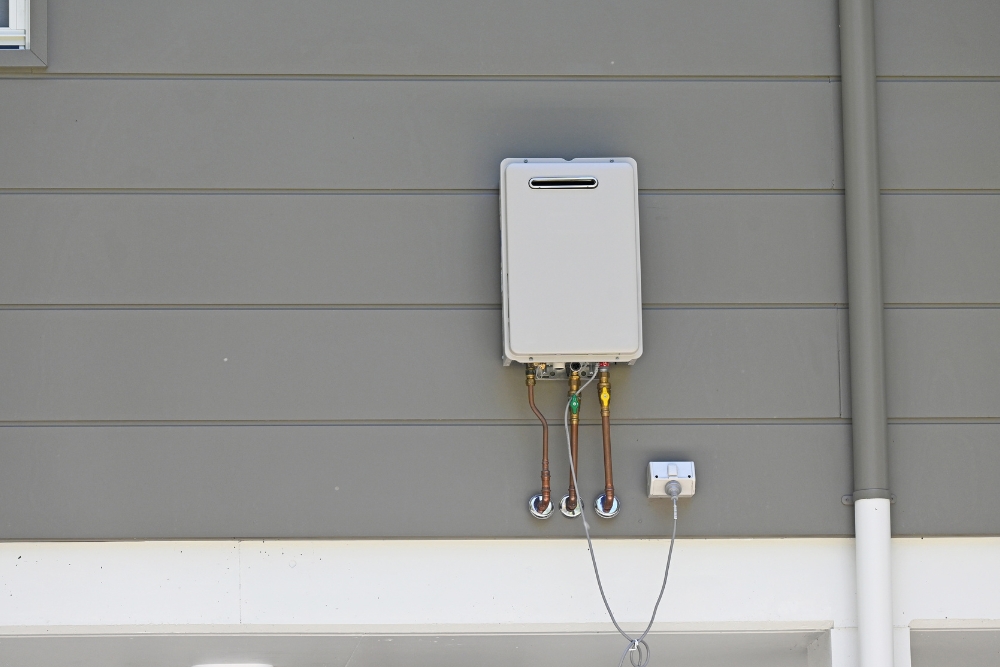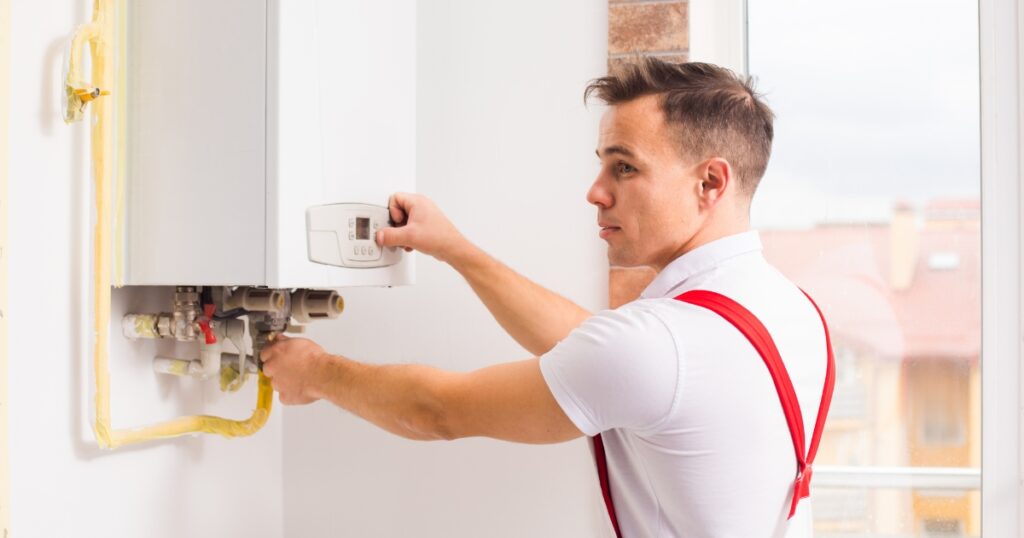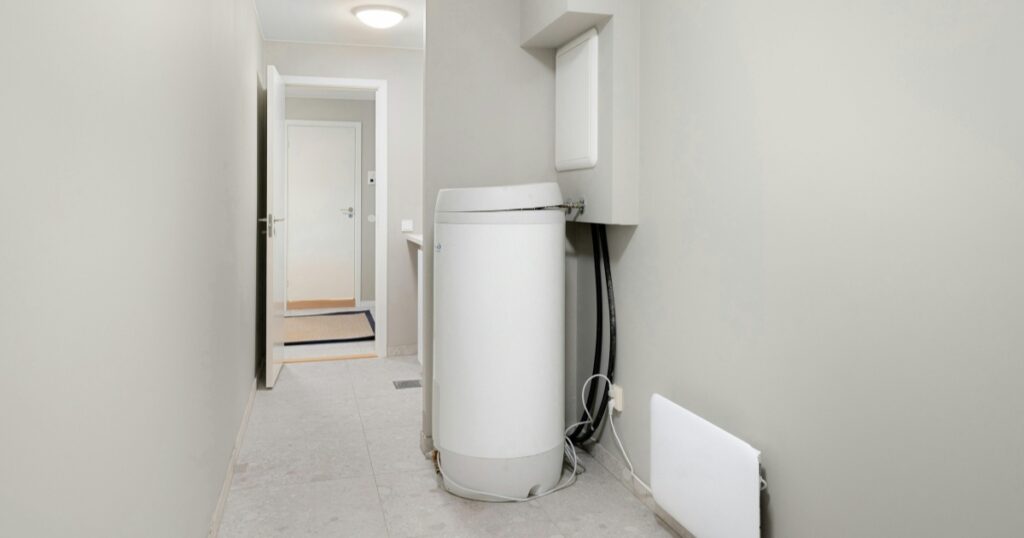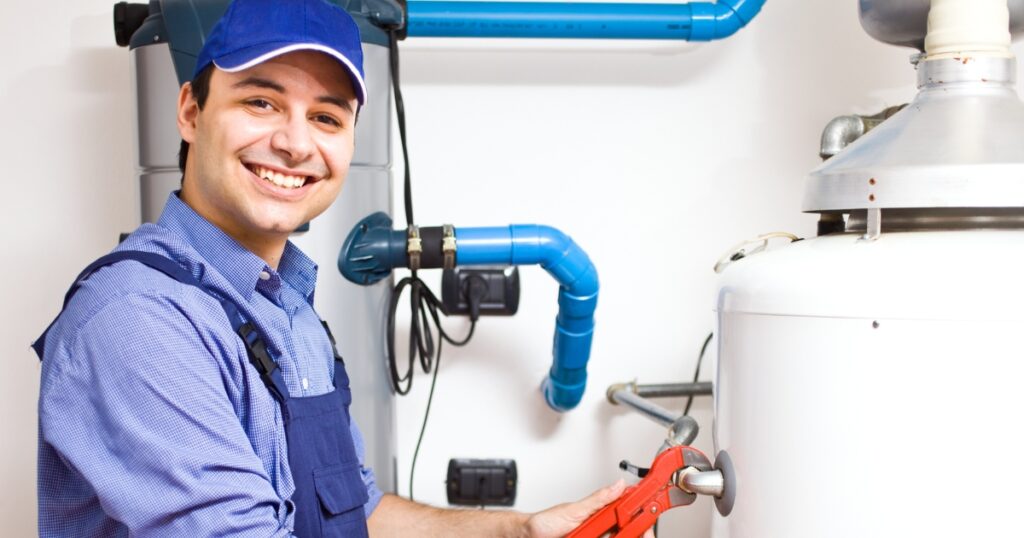Finding your hot water’s gone walkabout just when you’re dying for a warm shower can be a pain in the neck, can’t it? It’s something many of us have copped at one point or another.
But don’t throw your hands up in frustration just yet! Regular check-ups are the unsung heroes when it comes to keeping your hot water system fighting fit. So, let’s get stuck into this checklist – it’s chockers with tips to help ensure your system is running as smoothly as Bondi Beach on a quiet morning.
Get ready to soak in the certainty that comes with knowing you’ll always have hot water on tap!
Key Takeaways
- Regular hot water system inspections and maintenance by professionals extend the lifespan of your heater, ensuring efficiency and safety.
- Paying attention to signs like strange noises, low water pressure or rusty water can help identify issues early before they become costly problems.
- DIY inspection tasks such as flushing sediment build-up and checking anode rods are important but should be complemented with professional assessments for a comprehensive check-up of the system.
- Professional annual maintenance plans assist in the timely identification and resolution of any potential issues, increasing overall efficiency and resulting in cost savings.
- Clearing the area around your hot water tank and installing filtration solutions contribute to maintaining an efficient, durable hot water system.
Why Water Heater Inspections Are Important
Regular water heater inspections are crucial for maintaining the lifespan of your system, identifying potential issues early, and ensuring both efficiency and safety. Ignoring inspections can lead to costly repairs or even a complete replacement down the line.
Extend the lifespan of the water heater
As homeowners, we all want our water heaters to last as long as possible. By following a professional hot water system inspection checklist, we actively contribute to extending its lifespan.
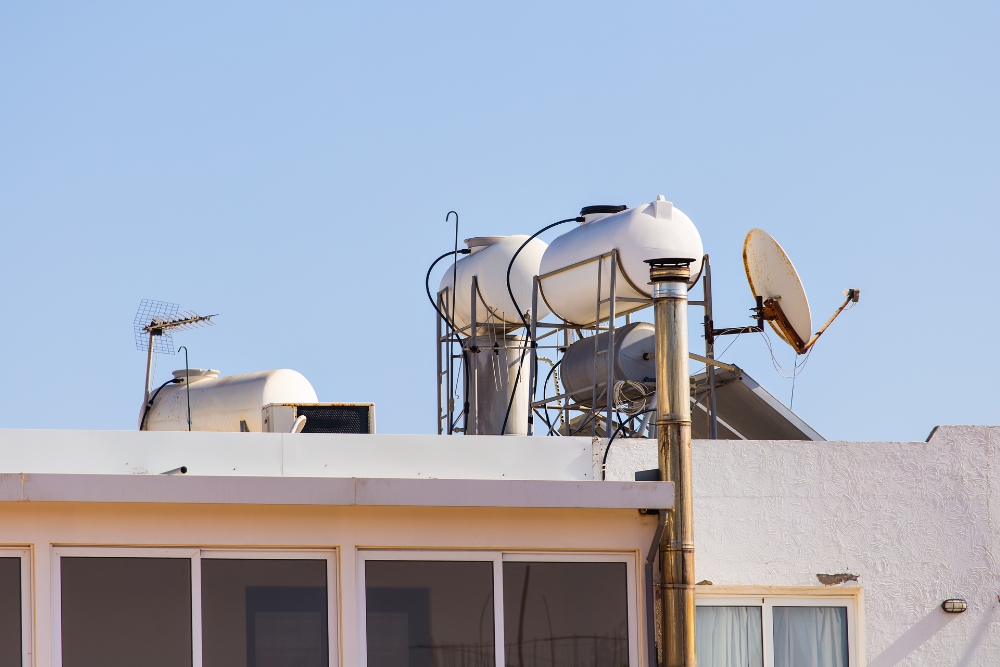
Regular maintenance is key; it includes removing sediment buildup that can cause corrosion and reduce heating efficiency. Ensuring the anode rod is in good condition also plays a crucial role, as it protects the tank from rust.
We can keep our water heaters running smoothly by scheduling annual checks with certified plumbers who use the plumbing inspection checklist for a comprehensive evaluation. These professionals will test safety devices like the pressure relief valve and make sure ventilation systems are not blocked.
With their expertise, they help us prevent problems before they become costly repairs or require a complete replacement of our hot water system.
Identify issues early
Regular inspections of your water heater are critical for early detection of issues. These checks are essential as they help service providers remove sediment, assess ventilation, and ensure that the system is functioning correctly.
Additionally, monthly preventive maintenance should include a visual inspection for any warning signs or unusual noises. This helps in identifying level 1 and level 2 faults in the hot water plumbing system before they become major problems.
Ensuring that your system is checked regularly can prevent potential hazards and avoid costly repairs down the line. By identifying issues early, you can extend the lifespan of your water heater while maintaining safety and efficiency.
Ensure efficiency and safety
To ensure efficiency and safety, it is crucial to schedule regular professional hot water system inspections. Trained professionals can conduct a thorough assessment of the water heater, including removing sediment buildup, checking ventilation, testing for carbon monoxide, and evaluating valve functionality.
These inspections also help in identifying level 1 and level 2 faults in the hot water plumbing system, ensuring timely resolution of issues that could potentially compromise the performance and safety of the system.
Additionally, clearing the area around the hot water tank on a regular basis is essential to prevent any items from crowding the unit. Installing a filtration system for the water heater can further enhance its efficiency and longevity.
Signs of a Failing Water Heater
If you start hearing strange noises coming from your water heater, notice a decrease in water pressure, or see rusty water coming out of your taps, it might be a sign that your hot water system is failing.
Leaks or pooling of water around the tank are also indicators that something may be wrong with your unit.
Strange noises
If strange noises are coming from your water heater, it could be a sign of sediment buildup or an issue with the heating element. Over time, mineral deposits can settle at the bottom of the tank, causing popping or rumbling sounds during heating.
Ignoring these noises may lead to reduced efficiency and potentially even damage to the tank. Considering professional hot water system inspection can help identify and resolve such issues promptly.
Inspecting for strange noises is important as they provide early warning signs of potential problems with your water heater. Regular checks for unusual sounds along with professional maintenance can ensure that your hot water unit operates efficiently and safely.
Low water pressure
Regular checks around the hot water tank are crucial to ensure that no items are crowding the unit. Low water pressure can indicate a potential issue with your hot water system; it may be caused by sediment build-up, a failing pressure relief valve, or even deteriorating pipes.
Moreover, if you notice low water pressure in both your hot and cold taps, it could also be a sign of larger plumbing issues that warrant immediate attention from professional service providers.
A plumbing inspection checklist includes safety practices to assure regulatory compliance and meet client expectations. Professional plumbers will be able to perform detailed assessments of your hot water system and identify the root cause behind low-pressure issues.
Rusty water
Rusty water coming from your hot water taps is a clear indication of corrosion inside your water heater. This could be due to the aging of the tank, causing rust and sediment buildup over time.
The presence of rust in the water may lead to further damage to the internal components of your system, affecting its efficiency and potentially posing health risks if consumed. It’s crucial to address this issue promptly by seeking professional assistance or considering an upgrade to a more efficient model.
Leaks or water pooling
After checking for signs of rusty water, it’s essential to also inspect for leaks or water pooling around the hot water system. Even small drips can be indicative of a larger issue and should not be ignored.
Puddles or leaks may signal damage to the unit that could lead to major problems if left unchecked. Regularly monitoring the area around your water heater for any signs of pooling or dampness is crucial in maintaining its efficiency and safety.
Identifying and addressing leaks promptly helps prevent potential damage to your property while ensuring the optimal functioning of your hot water system. It is important to address any signs of leaking immediately by contacting a professional plumber who can assess and rectify the situation, keeping you safe from potential hazards associated with faulty plumbing systems.

DIY Water Heater Inspection Checklist
To keep your water heater in top condition, it’s important to conduct regular DIY inspections. Turning off the water heater, checking for leaks and damage, flushing out sediment build-up, and inspecting the anode rod are all crucial steps to ensure its efficiency and safety.
Turn off the water heater
To ensure safety and prevent any accidents, be sure to turn off your water heater before conducting any inspection or maintenance work. Here’s how you can do it:
- Locate the power source of your water heater, typically a dedicated switch on the circuit breaker panel. Flip the switch to the “off” position to cut off the electricity supply to the water heater.
- For gas-powered water heaters, find the gas valve near the unit and turn it to the “off” position to stop the flow of gas.
- If you have a solar-powered or heat-pump water heater, follow the manufacturer’s instructions for safely shutting off the system.
- Once the power or fuel supply is disconnected, wait for the water in the tank to cool down before proceeding with any maintenance or inspection tasks.
- Before restarting your water heater, always double-check that all necessary maintenance and inspections have been completed and that it is safe to re-activate your water heating system.
Check for leaks and damage
After turning off the water heater, it’s important to check for leaks and damage to prevent potential issues. Here’s a detailed checklist for checking leaks and damage:
- Inspect the area around the water heater for any signs of water pooling or dampness.
- Check for visible signs of corrosion or rust on the tank, pipes, or fittings.
- Examine the pressure relief valve and drain valve for any leaks or drips.
- Look for any water stains or discolouration on the floor or walls near the water heater.
- Ensure that all connections and joints are tightly sealed without any signs of leakage.
- Examine the flue pipe and ventilation system for any cracks, dents, or blockages.
- Verify that there are no electrical issues such as frayed wires or damaged insulation around the water heater.
Flush out sediment build-up
To flush out sediment build-up in your hot water system, turn off the water heater and allow it to cool down. Next, locate the drain valve at the bottom of the tank and attach a hose to it, then place the other end of the hose in a suitable draining location. Open the drain valve and let the tank drain completely. Once drained, close the valve and turn on the cold water supply to flush out any remaining sediment. Finally, turn off the cold water supply, disconnect the hose, and open a nearby hot water tap to allow air into the system.
Check anode rod
Checking the anode rod is crucial for maintaining your water heater. The anode rod prevents corrosion and extends the lifespan of the tank. Here are the steps to check the anode rod:
- Turn off the water heater and let it cool down.
- Locate the anode rod on top of the water heater, usually covered with a cap.
- Use a wrench to loosen and remove the cap covering the anode rod.
- Inspect the condition of the anode rod – If it is more than 50% depleted or coated in calcium, it needs replacing.
- Measure its thickness – If it has worn down to less than ½ inch thick, replacement is necessary.
- After inspection, either clean and reinstall or replace with a new anode rod if needed.
Inspect ventilation
Inspecting the ventilation of your hot water system is crucial for ensuring safe and efficient operation. It helps in maintaining proper airflow and preventing the build-up of harmful gases. Here’s how to inspect ventilation:
- Check for any obstructions or blockages around the vent pipe to ensure that the hot water system can expel combustion gases effectively.
- Look for signs of corrosion or damage on the ventilation pipe, as any issues could lead to gas leaks or inefficient operation.
- Ensure that the vent termination point is clear from any debris, such as leaves or bird nests, to prevent air intake restrictions.
- Verify that the vent pipe is securely attached and sealed at all joints to prevent leaks and maintain proper airflow.
Test water temperature and pressure relief valve
After ensuring that the ventilation is clear and properly functioning, it’s essential to test the water temperature and pressure relief valve. This step is crucial for maintaining the safety and efficiency of your hot water system. Here’s a detailed checklist for testing the water temperature and pressure relief valve:
- Locate the valve: Find the water temperature and pressure relief valve on your hot water system. It is usually located near the top of the tank.
- Release valve: Lift or lower the lever on the relief valve to allow a small amount of hot water to flow out.
- Check for proper function: The water should flow smoothly and then stop when you release the lever.
- Verify temperature: Use a thermometer to check if the water coming out matches the set temperature of your hot water system. It should be close to but not exceeding this temperature.
- Inspect for leaks: After releasing some water, ensure that there are no leaks around the relief valve or in its surrounding area.
- Resetting the valve: Once checked, carefully lower back down or push back in place, depending on your specific type of relief valve.
Benefits of Professional Water Heater Inspections
– Thorough inspection from trained professionals ensures that no issues are overlooked, leading to a more efficient and safe water heater. Annual maintenance plans can also help in the timely identification and resolution of potential problems, saving you both time and money in the long run.
Thorough inspection from trained professionals
Trained professionals conduct a thorough inspection of your hot water system to ensure that all components are in good working order. They check for sediment buildup, test carbon monoxide levels, assess water quality, and ensure proper functioning of valves.
By having professionals handle the inspection, you can be confident that safety standards are met and any potential issues are identified and resolved promptly.
Professionals provide an annual maintenance plan to keep your hot water system running efficiently. Their expertise ensures timely identification and resolution of issues, leading to increased efficiency and cost savings.
Annual maintenance plans
After a thorough inspection from trained professionals, it’s vital to consider annual maintenance plans to keep your hot water system running efficiently. Homeowners can benefit from enrolling in an annual maintenance plan, as it ensures timely identification and resolution of any potential issues that may arise with the water heater.
By scheduling regular professional maintenance through an annual plan, you can increase efficiency and cost savings while ensuring the proper functioning and safety of your hot water system.
Professional plumbing maintenance is key in identifying level 1 and level 2 faults in the hot water plumbing system – something that should not be overlooked by homeowners.
Scheduling regular professional checks is crucial for maintaining the longevity of your water heater – something homeowners need to prioritise when considering the overall upkeep of their property.
Timely identification and resolution of issues
Annual professional hot water system inspections ensure the timely identification and resolution of potential issues. Trained professionals thoroughly assess the condition of the water heater, checking for sediment build-up, carbon monoxide leaks, valve functionality, and overall safety.
By addressing any emerging problems promptly, homeowners can avoid costly repairs or even premature replacement of their hot water system.
Regular professional maintenance not only ensures that your hot water system operates efficiently but also helps in maximising cost savings over time. Professional inspections offer peace of mind knowing that any detected faults are resolved promptly, safeguarding both the performance and safety of your hot water unit.
Increase in efficiency and cost savings
Regular professional water heater inspections contribute to increased efficiency and cost savings. This leads to better heating performance and reduced energy consumption, saving you money in the long run.
A thorough inspection ensures that your hot water system operates at optimal levels, identifying any issues early on and preventing potential breakdowns or costly repairs. By maintaining your system’s efficiency, you can also extend its lifespan, avoiding the need for a premature replacement.
Installing filtration solutions as part of maintenance helps maintain clean water quality while maximising your hot water system’s longevity.
Additional Water Heater Maintenance Tips
Clearing the area around your water heater can help prevent any potential hazards or obstructions. Installing filtration solutions can also help improve the overall quality of your hot water.
Winterising your water heater and scheduling regular professional maintenance are also essential for ensuring its longevity and efficiency. Consider upgrading to a more efficient model if necessary for cost savings in the long run.
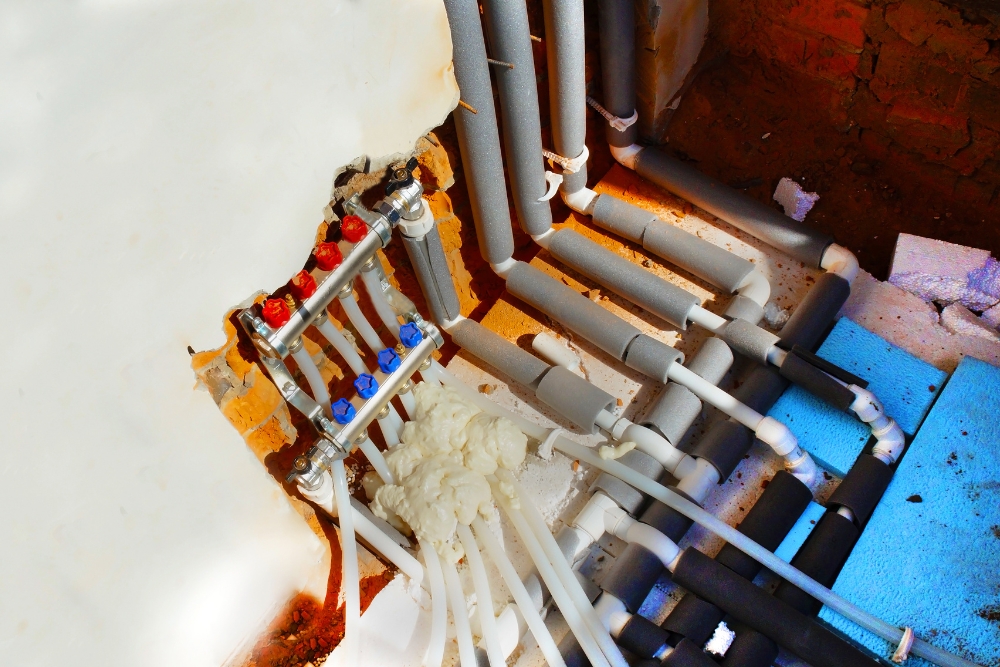
Clearing area 23 issues that may arise, ensuring prompt identification and resolution.
Taking steps to keep the area around your hot water tank clear is essential in preventing potential hazards and allowing for the smooth functioning of the unit. Regular inspection and maintenance of this space contribute significantly to the overall safety and performance of your hot water system.
Installing filtration solutions
When considering the maintenance of your hot water system, it’s important to think about installing filtration solutions. These solutions are designed to improve the quality of the water entering your heater, reducing sediment buildup and prolonging the life of your unit.
By ensuring that clean, filtered water is entering your hot water system, you can help maintain its efficiency and prevent potential issues down the line.
Filtration solutions play a critical role in preserving the lifespan of your water heater by mitigating sediment buildup and safeguarding against rust and corrosion. By implementing these solutions, homeowners can significantly reduce costly repairs while maintaining an efficient and reliable hot water supply for their household needs.
Winterising the water heater
To protect your hot water system during the colder months, thoroughly insulate the pipes and storage tank to prevent heat loss. Additionally, consider installing a water heater blanket for extra insulation.
This will help maintain the temperature of the stored water and reduce energy consumption during winter. It’s also important to check for any leaks in the tank or pipes that could lead to frozen or burst pipes.
Keywords: Winterising a water heater, Hot water system maintenance, Water heater insulation.
By following these steps, you can safeguard your hot water system from potential damage caused by freezing temperatures and ensure it continues to operate efficiently throughout winter.
Scheduling regular professional maintenance
Scheduling regular professional maintenance for your hot water system is crucial in ensuring its longevity and performance. By arranging annual inspections and maintenance with a certified plumber, you can rest assured that potential issues are identified early, preventing costly repairs down the line.
Professional checks also include safety evaluations to ensure compliance with regulations, keeping your hot water system running smoothly and safely.
Regular professional maintenance plays a key role in maintaining the efficiency of your hot water system while ensuring that all components are functioning as they should. A trained professional will conduct thorough evaluations, remove sediment build-up, check ventilation systems, test for carbon monoxide, and assess water quality and valve functionality – all essential tasks to keep your hot water system running optimally.
Consider upgrading to a more efficient model.
Upgrading to a more efficient hot water system model can lead to significant cost savings and increased energy efficiency. By investing in a newer, more advanced model, homeowners can enjoy improved performance while reducing their environmental impact.
Modern models often come with features such as better insulation, quicker heating times, and superior energy efficiency ratings, which contribute to lower monthly utility bills and reduced carbon emissions.
Switching to a more efficient hot water system also means enjoying the benefits of updated safety features and longer-lasting durability. With advancements in technology, newer models are designed to meet higher safety standards and offer enhanced longevity, providing peace of mind for homeowners.
Your Space Deserves Prompt Hot Water Repairs – Choose Us!
In conclusion, professional hot water system inspections are crucial for maintaining efficiency and safety. A well-executed inspection can extend the lifespan of your water heater by identifying issues early on.
By investing in regular professional maintenance and adhering to a comprehensive checklist, you ensure cost savings, increased efficiency, and prolonged longevity of your hot water system.
Don’t overlook the significance of this checklist in ensuring the proper functioning and safety of your property’s hot water system. Regular checks help maintain its functionality to meet both regulatory compliance and client expectations.
Ensure the longevity and efficiency of your hot water system with our Professional Hot Water System Inspection Checklist. At Hot Water Repairs Today, we prioritise the performance of your system. Our expert technicians meticulously inspect every aspect of your hot water system, identifying potential issues before they become major problems. Trust in our comprehensive checklist to keep your hot water flowing consistently. Schedule your professional inspection today and experience peace of mind knowing your hot water system is in capable hands. Your satisfaction is our commitment. Contact Us Now!

